Finding Home
The train halted at Keleti station, and the few passengers in our coach disembarked. It's the same station where Middle Eastern refugees first arrived in Central Europe during the Syrian Civil War. Images of people sleeping in and around the station had circulated globally. Now, a gloomy emptiness greeted me at noon. The passengers had already departed, and the regional services were long gone. Only a few elderly people and some young festival-goers, searching for the Sziget Festival, broke the desolate quiet. A bus carried me to Andrássy út, and from there, a short walk along the avenue led me to my hotel. As I wandered along the tree-lined streets of central Pest, a profound sense of familiarity and belonging swept over me—a home away from home, complete with Lángos takeaways, late 19th-century architecture, and elegantly dressed elderly women who, despite the scorching 35°C, still walked with stylish resilience.
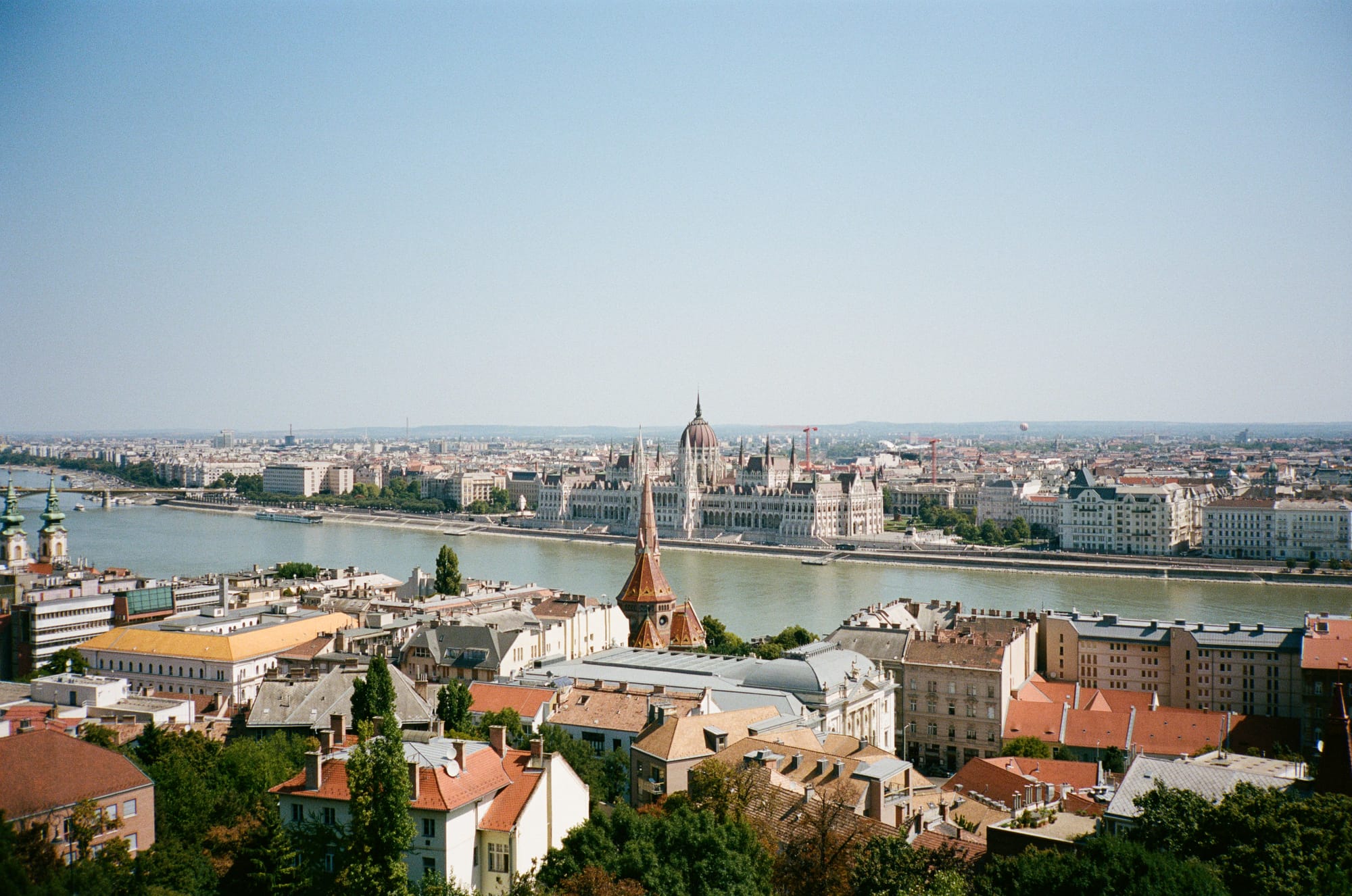
Traveling used to be an escape mechanism, or so I thought. This time, however, I found myself deeply immersed in my thoughts. But somehow, I was at peace. I felt at home. After all, Transylvania was under Hungarian—and occasionally Austrian—rule for almost a thousand years. The Hungarians settled in the Carpathian Basin in the 9th century, with their influence reaching Transylvania a century later. The darker periods of our cohabitation, especially after the Austro-Hungarian Compromise of 1867, created a rift that ultimately led to a breakup. Economically speaking, Transylvania thrived under Hungarian governance. Transleithania was economically more homogeneous than the principalities at the distant edges of the Austrian Empire in Cisleithania. Yet, paradoxically, Hungary struggled with its ethnic minorities. The policy of forced Magyarization ignited deep ethnic conflicts, which seemed resolvable only through a bittersweet divorce.
As I walked down Andrássy út, my thoughts drifted to an alternate history of Transylvania, one in which it was part of the United States of Greater Austria (Vereinigte Staaten von Groß-Österreich)—a vision of Aurel Popovici, supported by Archduke Franz Ferdinand, aimed at solving ethnic conflicts through federalization. However, this plan dissolved into the what-ifs of history. Could such a vision have steered Hungary away from its shift to the right? After all, the Treaty of Trianon lingers as a scar in the collective memory, constantly revisited in FIDESZ's rhetoric and Viktor Orbán’s campaigns. By the time these thoughts settled, the check-in process completed almost unnoticed. The Art-Nouveau windows of my room offered a view of the Opera House and the bustling avenue below—a stark contrast to my quiet thoughts.
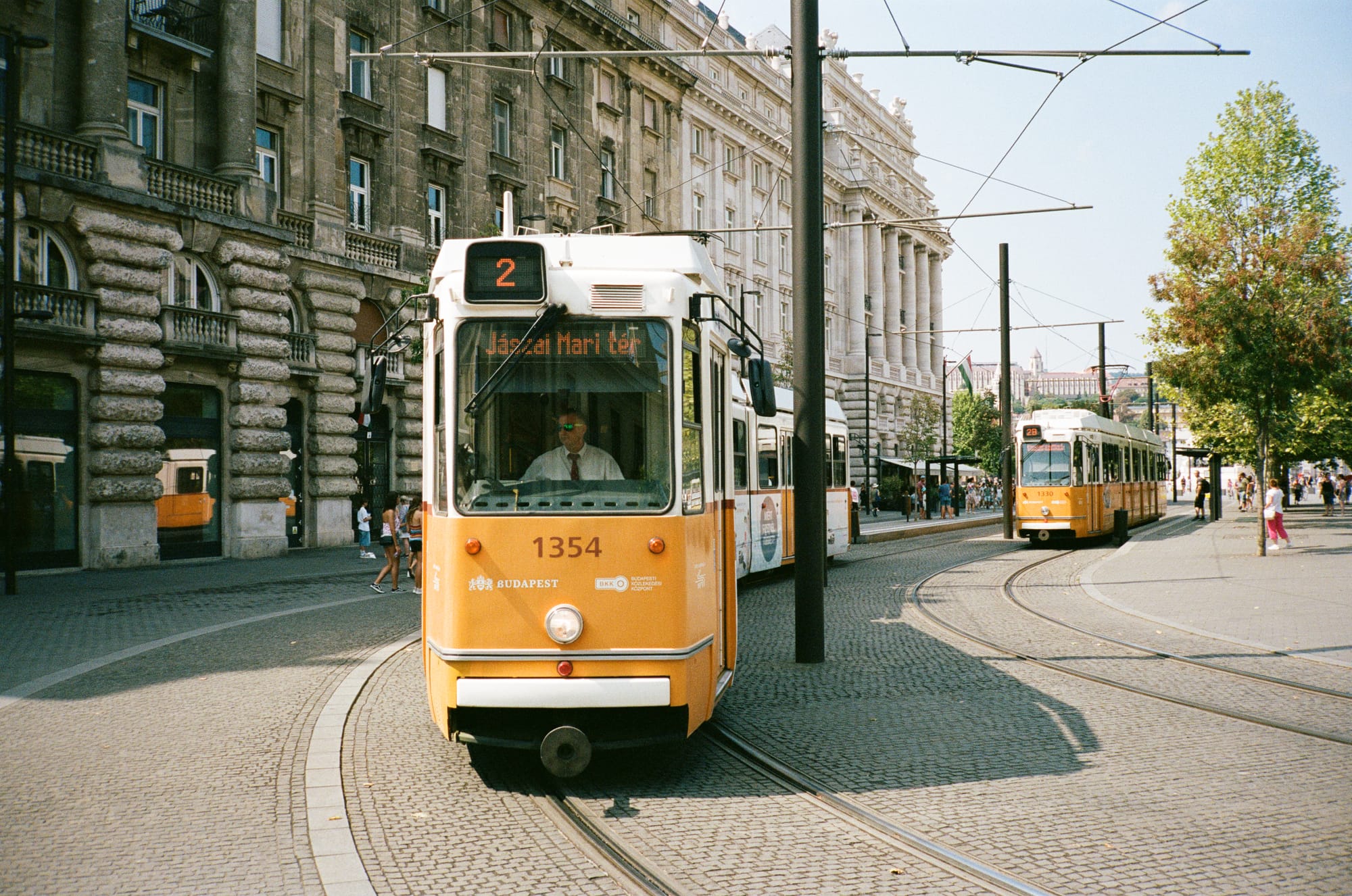
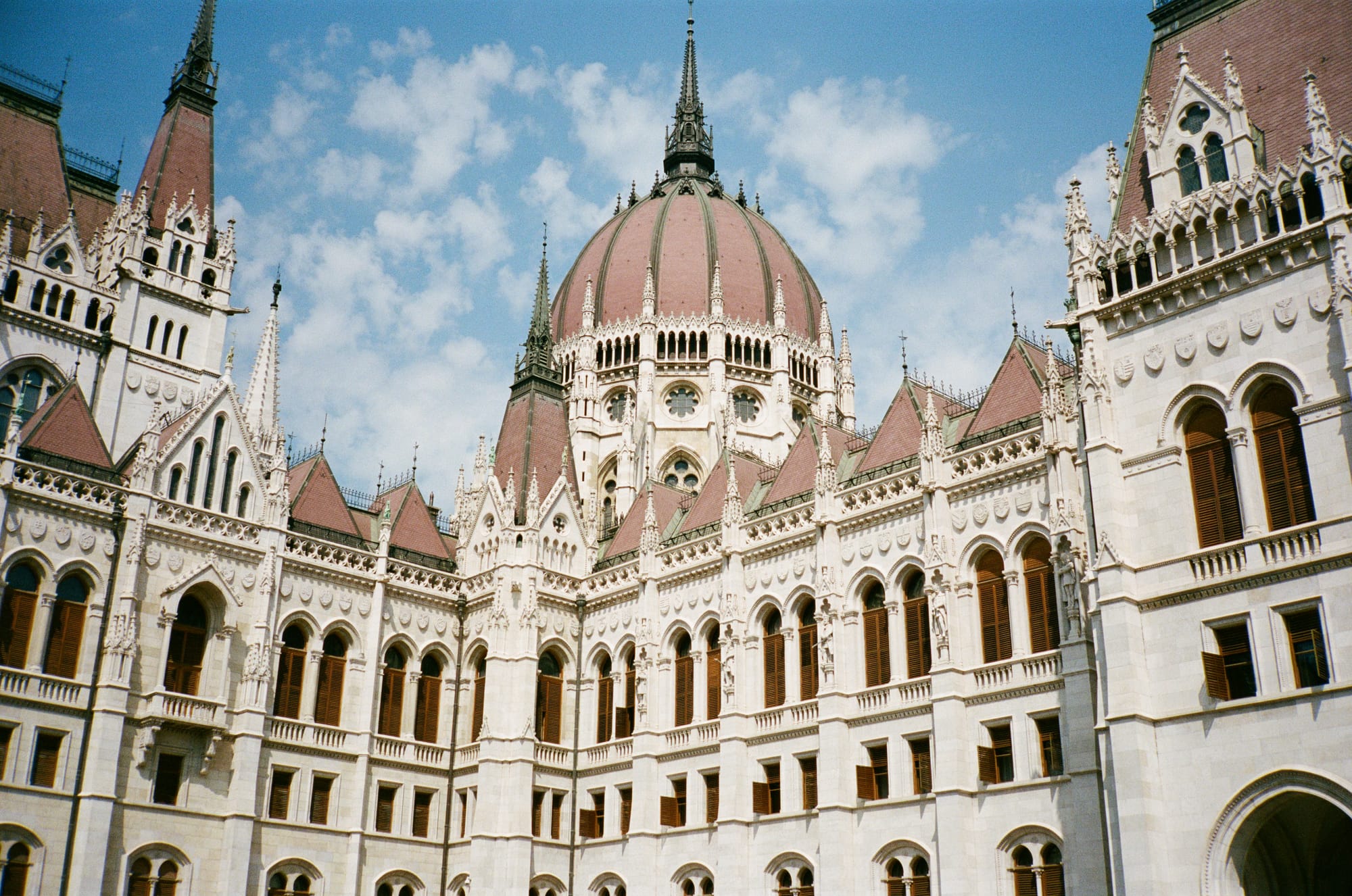
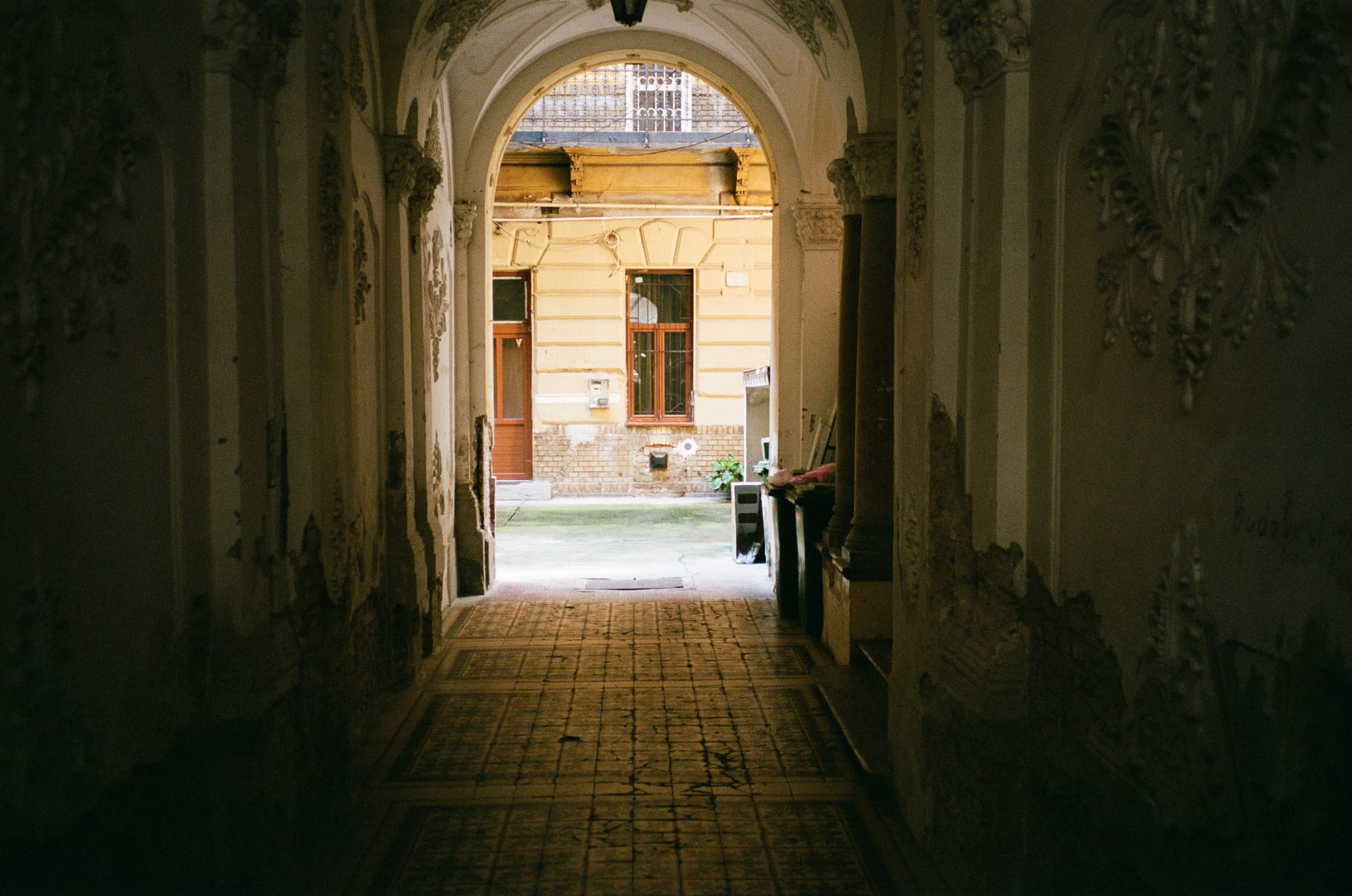
Around Kossuth Lajos tér | Contax T2 | Kodak Portra 400
Soon after, I stepped outside. The torrid heat of the afternoon struck me, turning my bucket hat into a miniature greenhouse atop my head. Thankfully, my thinning hair—or lack thereof—offered some relief. I found myself in the Jewish quarter, or what remains of it. The enormity of the synagogues, like the Dohány Street Synagogue—the largest in Europe—marked Budapest's robust Jewish heritage. The rhythm of my days became a predictable cycle: breakfast, sights, coffee, cakes, a brief dinner, followed by a retreat to the hotel. The evenings were correspondingly full, filled with long baths and longer thoughts. Ceiling gazing. Wondering. Analyzing. Questioning.
Throughout my stay in Budapest, remnants of the past guided me. From the Transylvanian coat of arms on the Hungarian Parliament to memorials dedicated to Petőfi Sándor, Hungary’s national poet, who perished in Sighișoara (ger. Schäßburg; hun. Segesvár), battling the Russians. With each step through the city, a sense of familiarity followed. The elderly woman selling paprika at the market. The cube house exhibition at the Ludwig Museum. The layers of Dobos torte at Ruszwurm. And last but not least, the paintings of the Nagybánya artists' colony on display at the Hungarian National Gallery. Originally conceived as a summer retreat, the colony eventually turned into a permanent creative hub. Baia Mare (ger. Frauenbach; hun. Nagybánya), a quaint little town in Northern Transylvania, fostered the modernization of Hungarian art under Simon Hollósy's guidance. The plein-air paintings of his students, which adopted Western modern styles, now adorn the walls of Buda Castle.
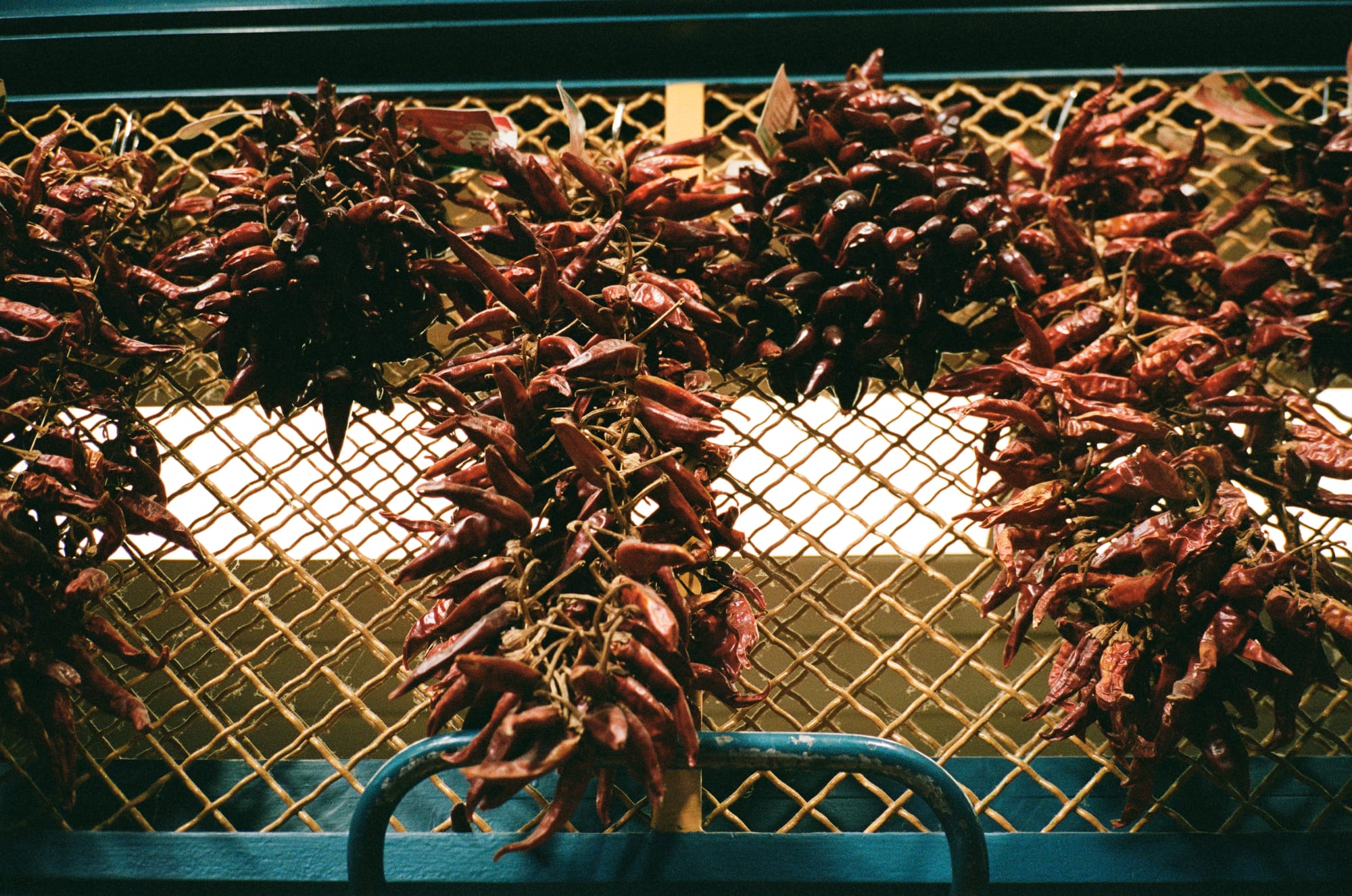
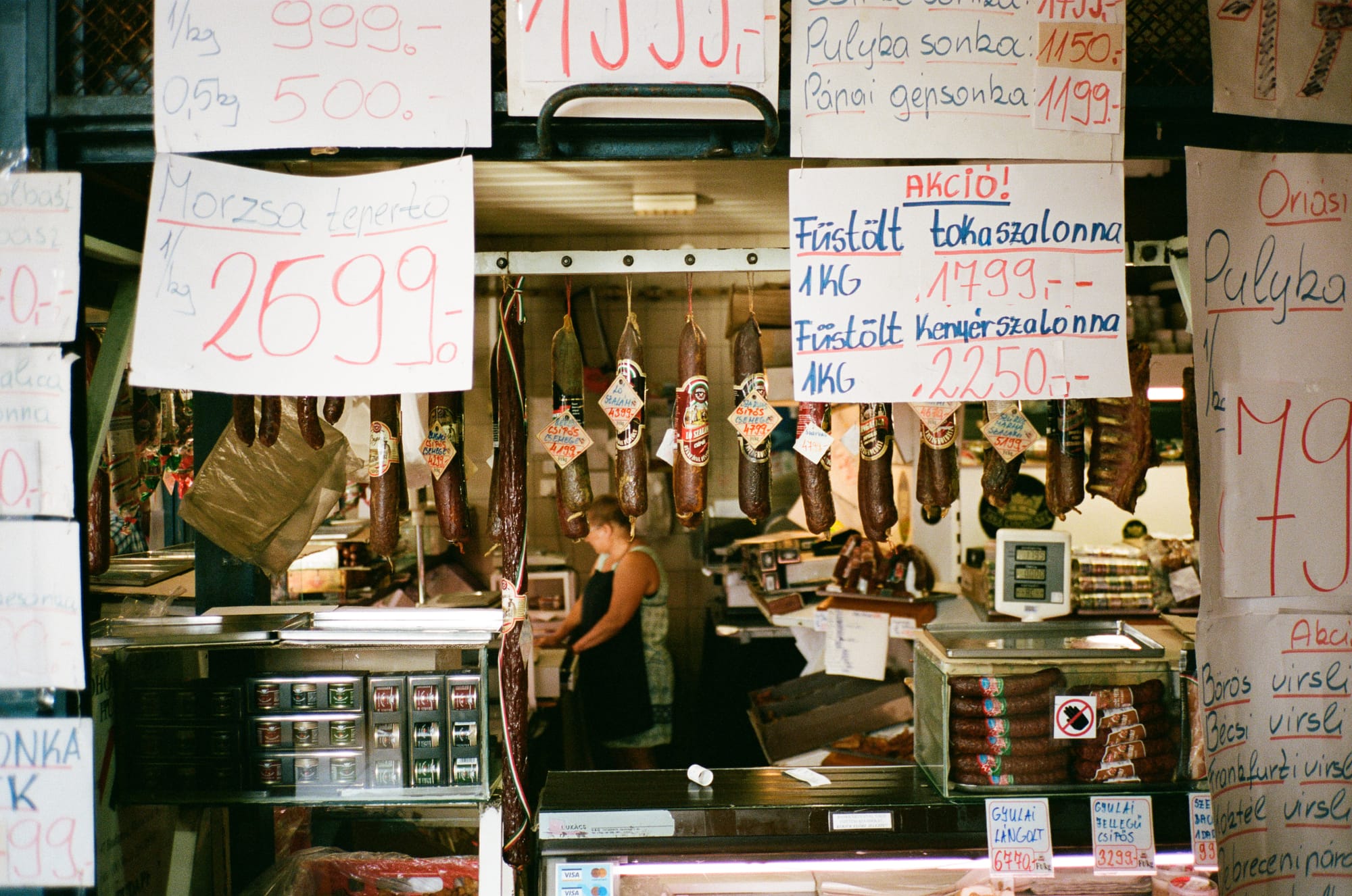
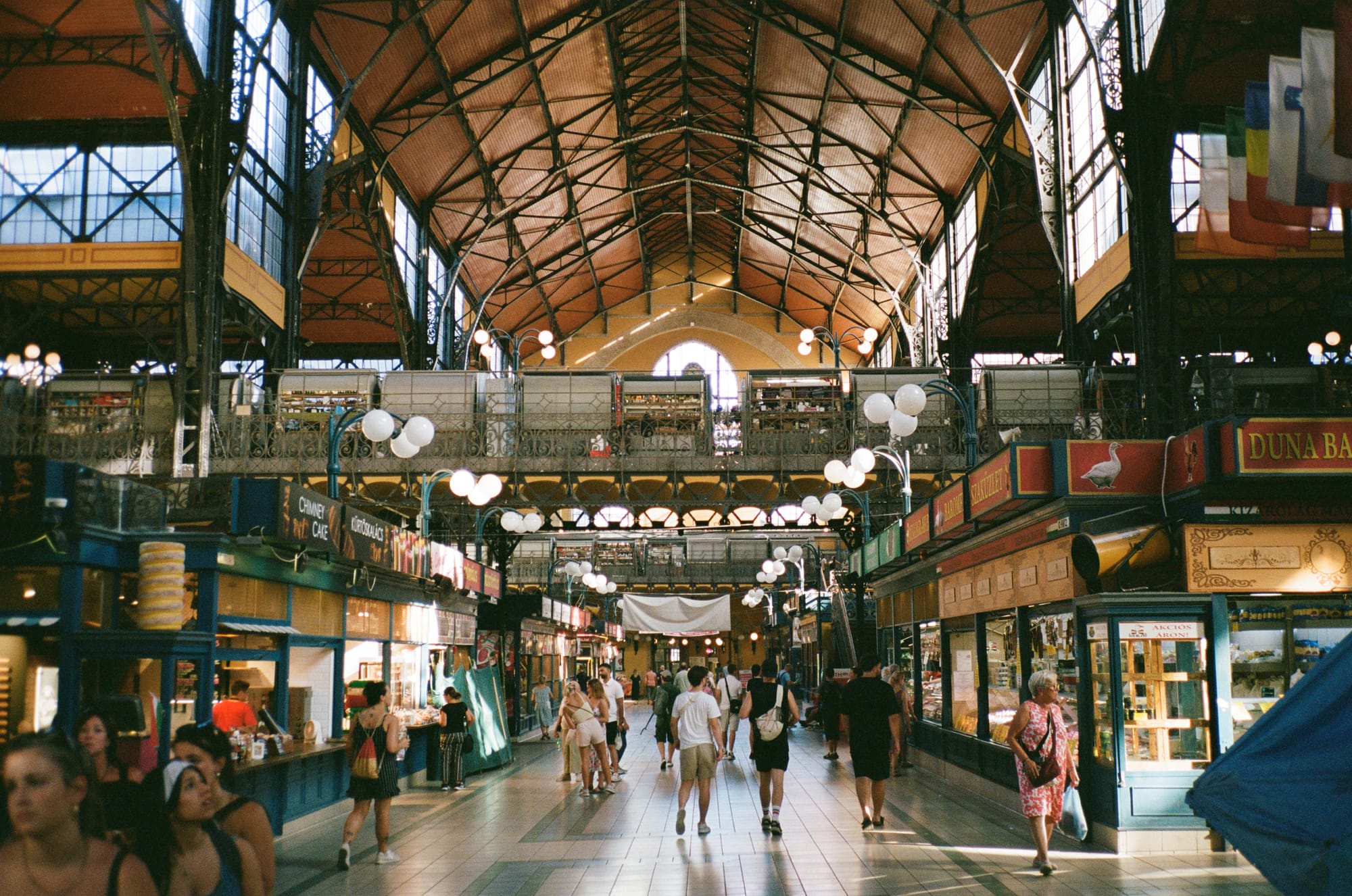
Scenes from the Central Market Hall | Contax T2 | Kodak Portra 400
These retrospectives were mere droplets that retreated into the silence of my inner thoughts. Each scene became immortalized in my consciousness. At Buda Castle, amid hundreds of American tourists disembarking from Danube cruises to visit the Matthias Church and the Fisherman's Bastion. Along Bartók Béla út, where people of all ages and sizes emerged from the Gellért Thermal Baths for a light evening meal and a hearty ice cream. Along Váci utca, I was reminded of why I should have avoided the street altogether. In Massolit, where a young barista recognized my Monocle bag and excitedly mentioned their feature in the magazine, despite never having read it before. And at Bambi, where I savored a lemonade in a setting that could only be described as comparable to a hotel lobby in 1960s Brașov (ger. Kronstadt; hun. Brassó).
I suppose I never truly figured out what was going on within me in Budapest. I didn't find the answers to all my questions. Yet, amidst this uncertainty, I unexpectedly found a piece of home.
To visit:
- Hungarian National Gallery (in the Buda Castle): for Hungarian art
- Hungarian Parliament: for neo-Gothic architecture
- Robert Capa Center: for contemporary photography
- Ervin Szabó Library: for imperial tranquility
- Urania Film Theatre: for arthouse cinema
- Jewish Quarter: for vibrant ruin bars
- Klauzál Market Hall: for the Malév birds
- Gellért Thermal Bath: for Art-Nouveau self-care
- Fisherman's Bastion: for spotting American tourists in the wild
To eat:
- Pinczi Butchers: for Virsli
- Gettó Gulyás (despite the tourist hype): for Chicken paprikás
- Rosenstein: for Gulyás
- Nagyi Lángos: for Lángos
- TATI: for Hungarian fusion
- Béla: for Lecsó
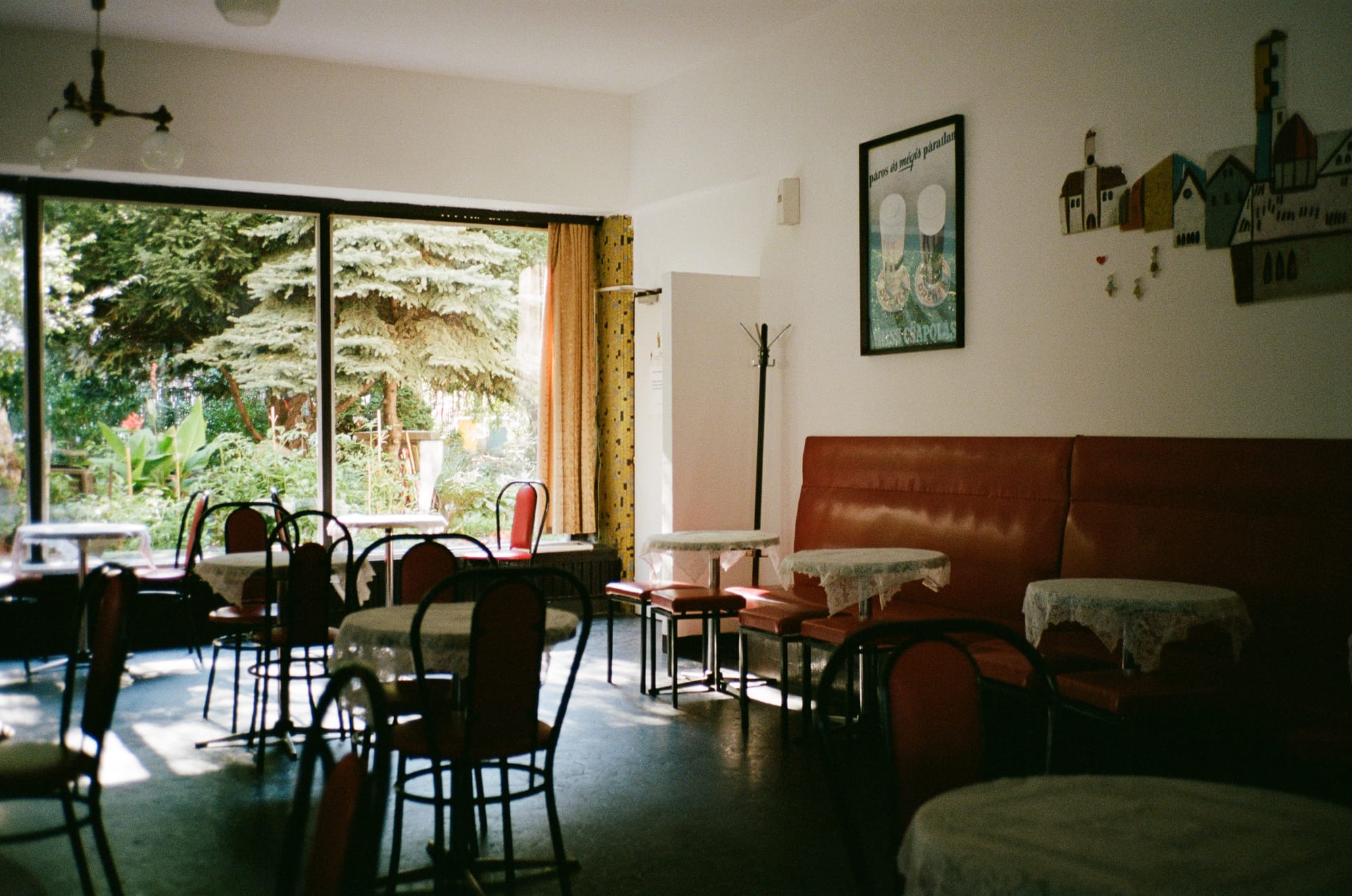
To recharge:
- Babka Deli: for Babka and Guba
- arán bakery: for pastries and wonderful sandwiches
- Ruszwurm: for Esterházy torte
- Babmbi: for lemonade
- Cube and Kelet: for coffee
- Mikrokosmos: for Krémes ice-cream
- espresso embassy: for coffee snobs
- W Lounge at the W Budapest: for Aranygaluska
To buy:
- Analog Cafe and Budachrome: for photographic film
- Massolit: for tea, English novels, and beautiful postcards
- Central Market Hall: for paprika (opt for locally sourced over industrially produced)
- Supermarkets: for Pöttyös (Túró Rudi; a classic curd snack)
On repeat:
- Osama – Zakes Bantwini & Kasango
- What Once Was – Her's
- For You – Zimmer90
- Lifetimes – Katy Perry
On my nightstand (recommendations from a close friend):
- Aus unseren Feuern – Domenico Müllensiefen (The trauma of loss and the bleak perspectives of life in the former GDR after reunification; a coming-of-age story with hints of a crime novel; found it quite challenging)
- Nino und der Wunsch nach mehr – Yvonne Eisenring (Airport lecture)